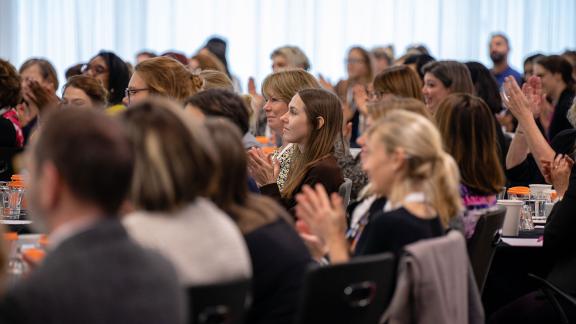EDI: enabling the climb together

Until equality, diversity and inclusion (EDI) is a natural part of the workplace, it needs commitment to get it there. Cathy Elliott writes on what she has done and is continuing to do to increase EDI at her trust and in her community.
Samantha Allen, chair of the Health & Care Women Leaders Network, stated on International Women’s Day this year that “my commitment to you is to continue to do all I can to advance gender equality and amplify inclusion for all.” Did you make a similar commitment that day? I did – in fact I renewed my commitment that day and pledged to do more to encourage others to create workplaces which achieve equality, diversity and inclusion (EDI). That pledge has led to being invited to write this blog for the network.
So, what is to be done? As a member of a growing number of female NHS trust chairs in the country and a relatively young one in comparison (according to NHSI and Cabinet Office sources), I can see things are changing for the better. However, friends and colleagues, there is more to do. You knew I was going to say that.
And so, what have I done so far? I am proud to have increased the diversity of our community and mental health trust board in around nine months with my colleagues, ensuring the diversity of our board membership is aligned with the diverse (and young) population we serve. How did we do it? We placed importance throughout the recruitment process on a commitment to EDI, alongside including a diverse group of internal and external stakeholders in the process and listening to their views. We met a variety of candidates who could all on paper do the job, but would they fit with our EDI ambitions? Along the way, we had moments of feeling uncomfortable as some candidates we interviewed shared their misunderstood and sometimes unfortunately ignorant views on EDI. But we then met brilliant and talented candidates who shone through with their inspiring views and experiences of achieving EDI and tackling prejudice in the workplace as well evidencing that they were more than capable of getting the job done. This process led to us appointing and now working with our new chief executive Therese Patten.
As women leaders in the NHS, Therese and I are on an EDI mission. Our commitment to EDI is recognised internally and externally, but how does it translate and work in reality for the members of staff working for our trust? That is a particular mission and another story perhaps for another blog.
Therese and I spoke at a number of International Women’s Day events this year, and received feedback that was humbling. This included women sharing privately experiences of domestic violence and mental health issues and praising the support they had received in the workplace, to young women openly sharing a feeling of being more capable in planning their career pathway, having heard our purposeful and sometimes surprising journeys to leadership.
So how do we enable women to climb and succeed in whatever pathway they choose to take in healthcare? Tailored mentoring and coaching, offering flexible working and supported leadership pathways are ingredients to achieving this. The repeated piece of advice from me is that if you have the time, the energy and interest, then take up every opportunity on offer to you. It could be volunteering, maybe being on a working group to broaden or deepen your experience, taking up mentoring when someone offers it in a meeting or seminar, observing or shadowing leaders in action to find out what the job really is like (and do you really want it?), and perhaps writing a blog when someone invites you to.
If we all make a pledge like Samantha Allen, then just imagine what we could achieve and the impact we can have collectively? I invite you to make a pledge to achieve inclusion and equality.
Cathy Elliott is chair of Bradford District Care NHS Foundation Trust. Follow her on Twitter @BDCFT_Chair



